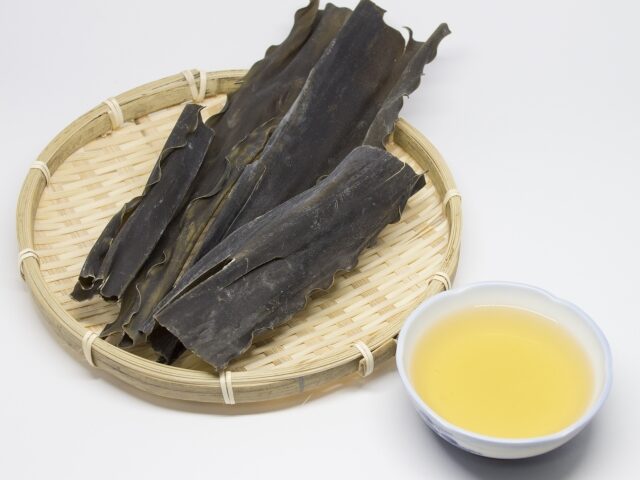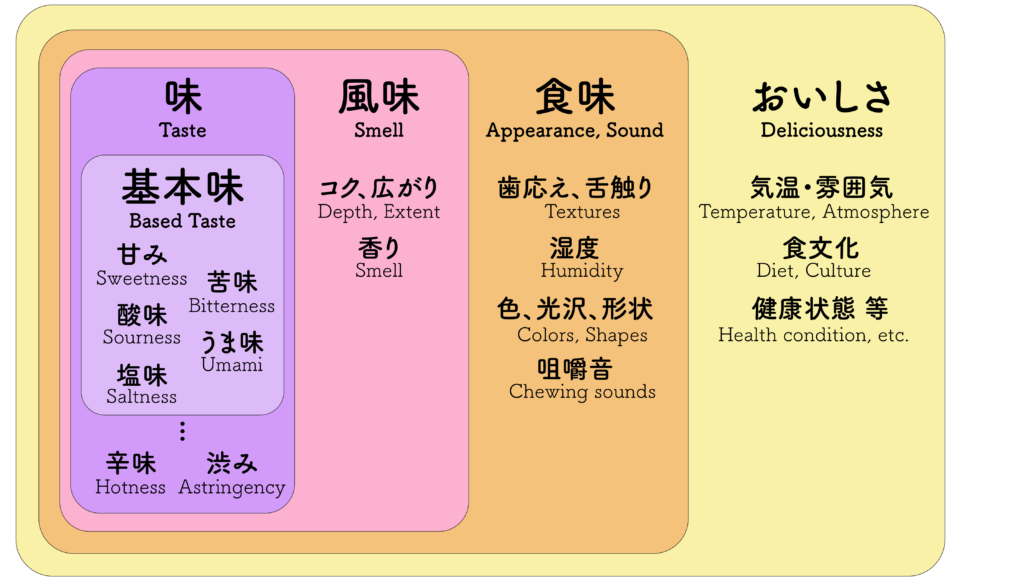- ブログ
うま味を上手に使ってみよう
Use ‘Umami’ to upgrade your veggie/vegan dish.

今年もやってきました!No Meat, November(ノーミートノーベンバー = お肉を食べない11月)
11月1日は「世界ヴィーガンデー(World Vegan Day)」としても知られています。イギリスに本部を置くヴィーガン・ソサエティが発足50年を記念して1994年に制定しました。
また11月は、語呂の良さから”No Meat, November”とも言われ、菜食が環境に与える好影響について勉強したり、動物の命について考えたりする期間としている人たちも多いようです。
私たちアリサン&テングも11月はこの “No Meat, November” の動きに合わせて、普段以上にみなさんにベジ・ヴィーガン食の良さを知っていただけたらと思っています。以前、ベジ・ヴィーガンの方々に不足しがちな栄養素についてご紹介させていただきましたが、今回は日本食に欠かせない「うま味」についてご紹介いたします。「うま味」は日本食だけでなく、お肉や魚の出汁を使わない、ベジ・ヴィーガン食でも大活躍します。美味しい出汁の取り方を習得して、味に深みを出してみましょう!
Happy “No Meat, November!”
Nov. 1st, is known as World Vegan Day, set by the vegan society in 1994; and in November, many people all over the world try not to eat meat for a whole month, learn the good impacts of being a vegetarian/vegan and think about animals.
We, Alishan, take this opportunity to spread the movement and love to everyone in Japan by writing articles to help all who want to, take a part. Earlier this year we wrote about nutrition for vegetarian & vegan people, and this time, we are writing about “Umami” which is not only very important for Japanese traditional dishes but also for vegetarian/vegan dishes to have depth of flavor. Learn how to make good “Dashi – stock-” and push your cooking skills to the next level!
まず、「うま味」という物が「おいしさ」のどこに位置しているのかを見てみましょう。日本語では「旨み・旨味、うまみ」などとも書きますが、これらはすべて「おいしさ」を表しています。しかし、「うま味」は、「甘み・酸味・塩味・苦味」と並ぶ基本味の一つとされています。
Before we get into how to make Dashi, let us see what ‘Umami’ really is. When we feel something is tasty, there are so many components to let us think in that way. In Japanese, ‘Umami’ often get translated as a noun of “deliciousness’, however, ‘Umami’ we talk here is one of the 5 base tastes: Sweetness, Sourness, Saltness, Bitterness and Umami.

うま味の成分として知られているのは、「アミノ酸(グルタミン酸)」「イノシン酸」「グアニル酸」の3種類です。一般的な出汁は植物性の野菜や昆布のうま味(グルタミン酸)と、動物性のイノシン酸を掛け合わせる物が多いのですが、動物性のうま味が含まれているとベジタリアンにはなりません。しかし、うま味とは面白いもので、2種類のうま味を掛け合わせることで相乗効果を生むことはできますので、イノシン酸の変わりにグアニル酸をグルタミン酸に合わせることで、十分満足感のある美味しい出汁をつくることができます。
There are three well-known Umami ingredients : Glutamic acid, Inosinic acid and Guanylic acid. Dashi is often made with glutamic acid which is also known as vegetarian broth and inosinic acid which can be found in animal products like meats and seafoods. Unfortunately this kind of blend cannot be used for vegetarian dishes, however, we can make a flavorful dashi by replacing inosinic acid with guanylic acid. When you make Umami at fullest, it’s important to use more than two types of umami ingredients.
野菜や醤油等の調味料など、比較的どんな食品にも含まれている「グルタミン酸」ですが、海藻類には特に多く含まれています。例えば、私たちが日本食によく使用するだし昆布にはホタテの約10倍、豚肉や牛肉の約140倍含まれています。ベジタリアン・ヴィーガンメニューでグルタミン酸を活用しようとしたら、昆布は絶対的に外せません。
そして、今回このグルタミン酸に合わせる「グアニル酸」は(ほぼ)干し椎茸からしかとれないと言われています(実際には、海苔やドライトマトにも含まれていますが干し椎茸がダントツです!)
今回は、この昆布と干し椎茸からおいしい出汁をとるコツをみなさんにご紹介します。
Glutamic acid can be taken out of vegetables and seasonings like soy sauce and miso but Kombu seaweed includes the greatest level of all. It contains 10 times as much as the acid of scallops and 140 times as much of pork or beef! If you want to make good vegetarian dishes, kombu cannot be missed.
And people say that guanylic acid that we are going to use instead of inosinic acid can only be taken from dried shiitake mushrooms (it’s actually contained in Nori seaweed, dried tomatoes etc, but the amount in shiitake mushroom is incomparable!)
Today, we would like to show you how to make good dashi out of these two ingredients.
<昆布出汁をとってみよう – Kombu dashi stock->
昆布出汁の取り方は2種類、水出しと火入れがありますが、いずれの場合も昆布の量は水に対して1%程度で大丈夫です(昆布 5g に水 500cc)
You can make Kombu stock in cold water or by heating; either way, you need 1% of kombu to the amount of water (ie. 5g of kombu to 500cc of water).
◉水出しの場合 -in cold water-
フタ付きの容器や煮沸消毒した瓶などに水と昆布を入れて一晩冷蔵庫に入れるだけ。
すっきりとした味わいで、昆布くささもないので繊細な料理におすすめです。
Put water and kombu into a tupperware or a sterilized jar and leave it in a fridge over night.
This stock has a very simple flavor and is good for light flavor dishes.
◉火入れする場合 -by heating-
小さい鍋に水と昆布を入れて30分ほど置き、その後弱火にかけて沸騰直前に火からおろす。
時間をかけてゆっくり熱を加える方が美味しい出汁がとれます。
水出しよりも昆布の味がしっかりとでますが、昆布くささはほとんどしません。
※火入れする場合は、昆布が入ったまま沸騰させないように気をつけてくださいね。
エグミや昆布くささの原因となります!
Put water and kombu into a small pan, leave it for 30 mins then put it on a low-heat. Remove the pan from the stove right before it starts boiling. The slower it heats the better stock it will be.
*Do not boil with the kombu in the pan; it can cause a harsh taste or strong kombu smell. Boiling after you take it out is OK!
上記の2つを組み合わせた方法もあります。
◉水出し&火入れする場合 -in cold water & heating-
一晩冷蔵庫にいれた昆布と水を、小鍋に入れて弱火で加熱する方法です。
少し時間はかかりますが、一番昆布の味を引き出すことができます。
You can combine two above. Pour water and kombu that soaked over a night into a small pan then heat.
It takes time, but you can get dashi at fullest.
<椎茸出汁をとってみよう -Shiitake dashi stock->
干し椎茸の出汁を作るのに重要なのは「時間」と「温度」です。水に対して干し椎茸の量は5%程度と覚えておいてください(椎茸 10g に水 200cc)
What’s important to make shiitake dashi stock are “time” and “temperature”. You need 5% Dried shiitake mushroom to the amount of water (ie. 10g of shiitake to 200cc of water)
① フタ付きの容器や煮沸消毒した瓶などに水と干し椎茸を入れて一晩冷蔵庫にいれます。
※水温が25℃を超えると苦くなってしまうので、夏場は特に冷蔵庫にいれることを忘れないでくださいね。
※戻した干し椎茸は2、3日戻し汁に入れたままで冷蔵保管できますが、グアニル酸がだんだん低下していきますので早めに使ってください。
Put water and dried shiitake mushroom into a tupperware or a sterilized jar and leave it in a fridge over a night.
*It turns bitter when water temperature gets higher than 25℃; do not forget to put it in the fridge especially in the summer.
*You can leave the shiitake in the water for a few days but the guanylic acid level can be lowered after three days so it’s better to use sooner.
②椎茸の戻し汁を小さい鍋に入れ、強火にかけます。温度が上がってきて、鍋底から泡が上がってきたら弱火にして沸騰させないように10分程度加熱し続けます。この加熱の工程でグアニル酸の含有率がググッとあがりますので、急いでいてもせめて5分は加熱すると良いでしょう。
Pour the water into a small pan and put on high-heat until you see bubbles coming from the bottom. Turn to low-heat and keep heating for 10 mins; do not let it boil. This heating process would increase the level of guanylic acid so you want to heat at least 5 mins even if you don’t have time.
<もっと簡単に出汁をつくるには? -easir way to make dashi stock?->
基本の出汁の取り方はわかったとしても、料理をする前にそれぞれ作って合わせるのはなかなか難しいですよね。そういう場合は、昆布と干し椎茸の戻し汁を同時に作ってしまう方法もあります。
So, now we know how to make kombu dashi stock and shiitake dashi stock, but it might be troublesome to do both before you actually start cooking. So, here is simpler way!
①大きめの瓶やピッチャーに水、昆布、干し椎茸を入れて冷蔵庫に10時間以上入れておくだけです。この時の割合は上記と同じです。(水 500cc, 昆布 5g, 干し椎茸 25g)
Put water, kombu and dried shiitake mushroom into a big jar etc and leave it in fridge for over 10 hrs. The ratio of each ingredients can be the same (500cc of water, 5g of kombu and 25g of dried shiitake mushroom)
②戻し汁を小鍋に入れて、弱火で時間をかけて加熱していきます。くれぐれも沸騰させないように気をつけてくださいね。
Pour the water into a small pan and put on low-heat until right before it starts boiling.
もし、戻し汁をすぐ調理に使用しないのであれば、製氷機などにいれて冷凍保存しておき、調理する直前に火入れする方法もありますよ。お家でもおいしい出汁をとって是非ベジ・ヴィーガン料理のレベルアップをしてみてくださいね。
If you are not going to use the stock water soon, you can pour that into an ice tray and freeze it. You can heat them before cooking. We hope your veggie/vegan dishes would be pushed to the next level with these dashi stock skills 🙂




